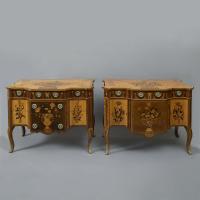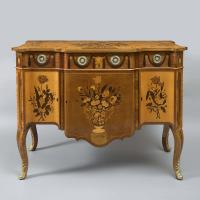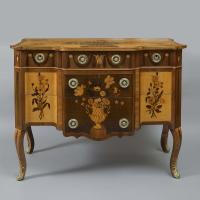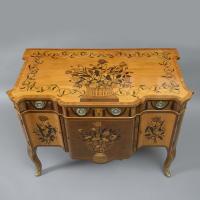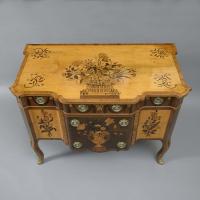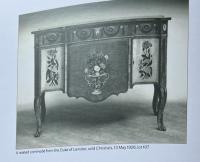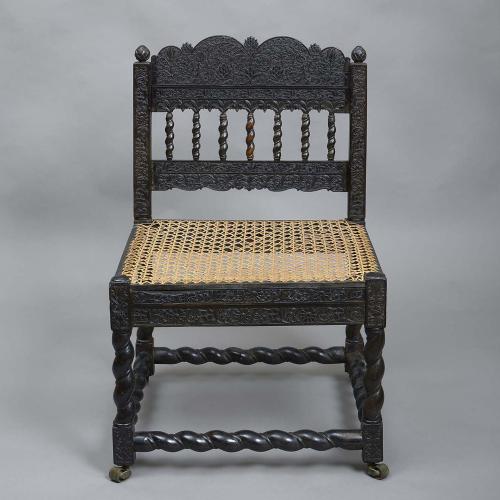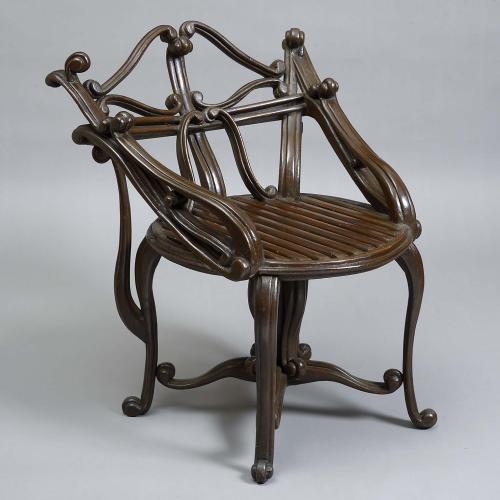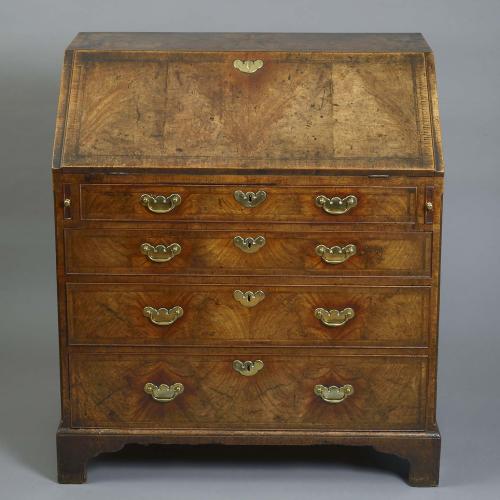
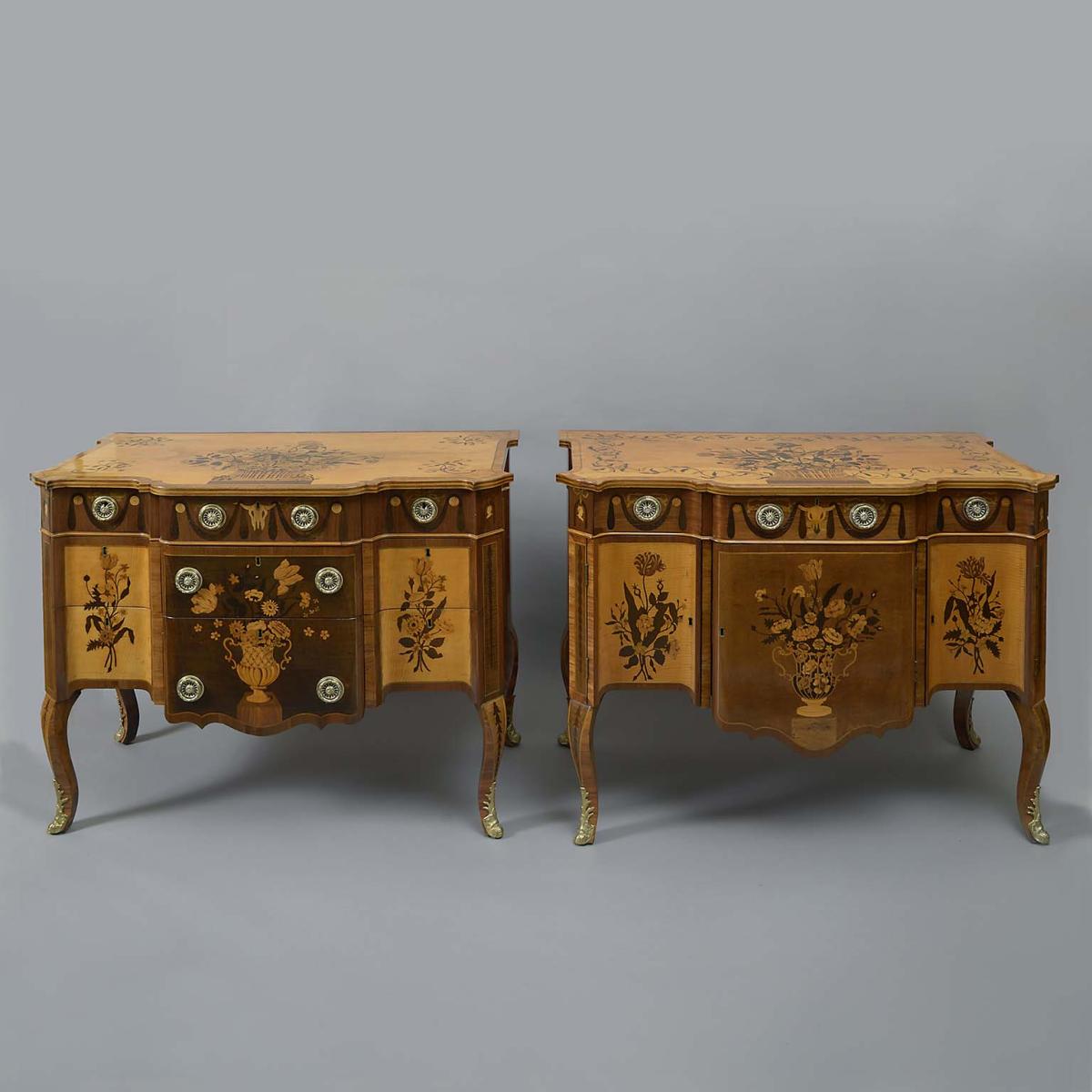
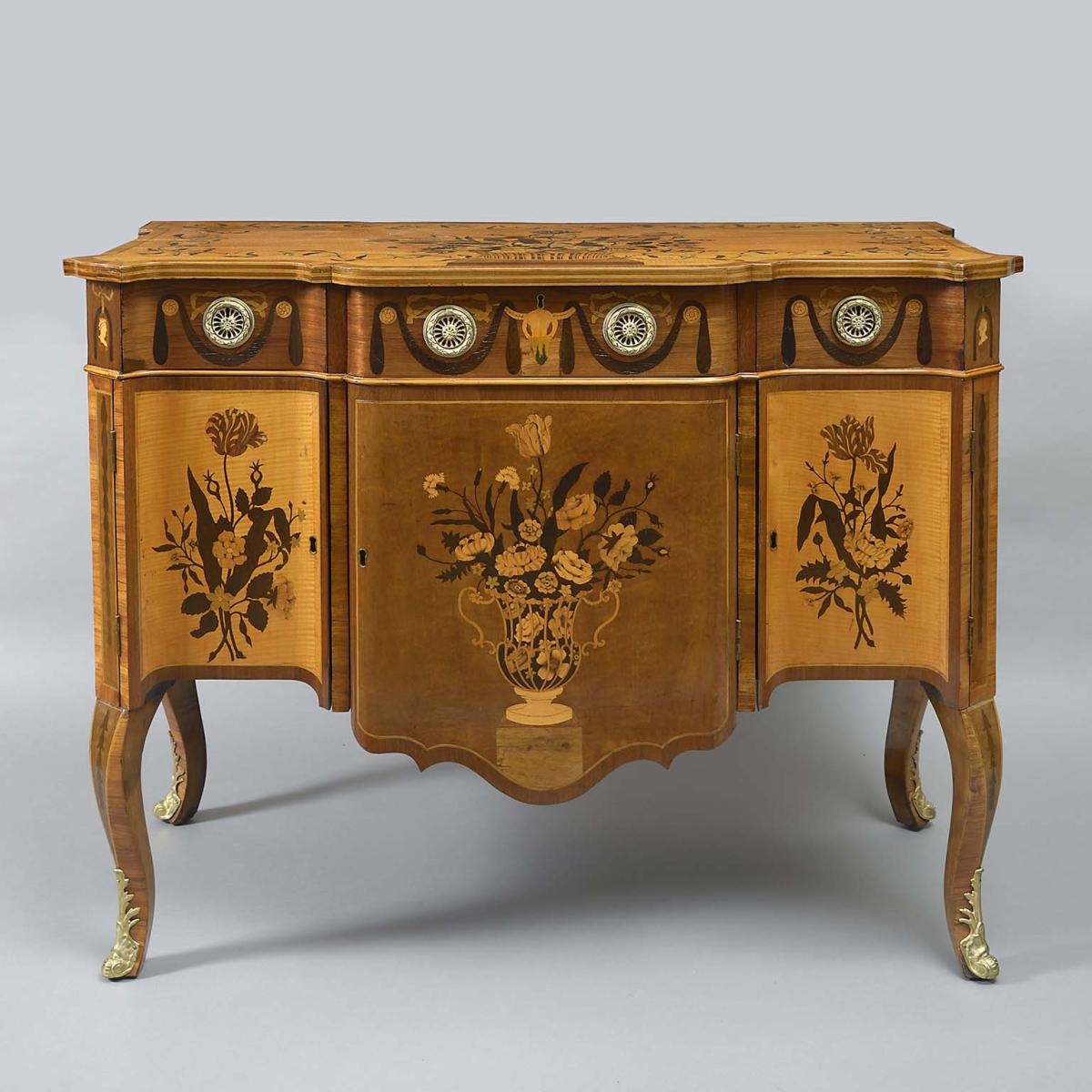
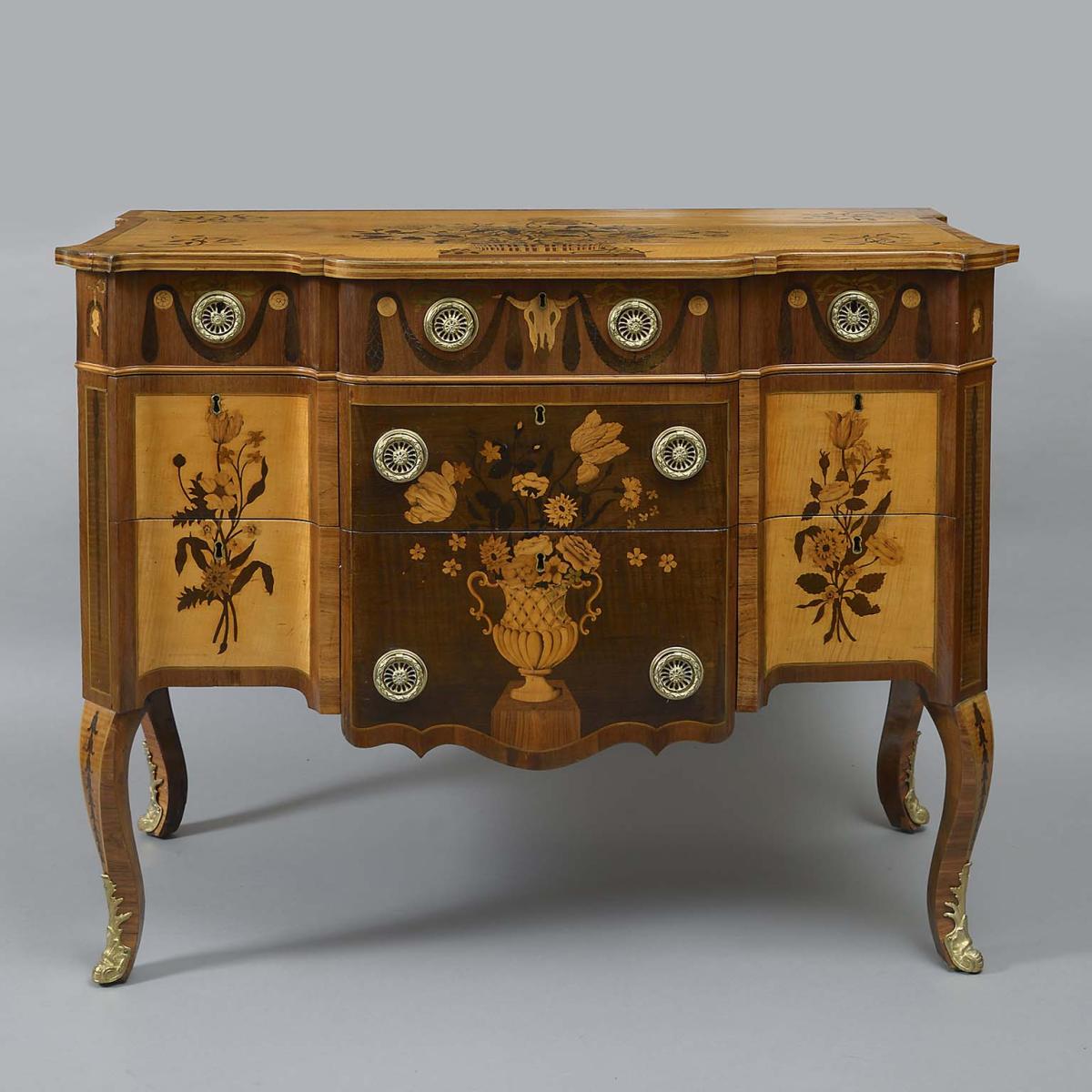
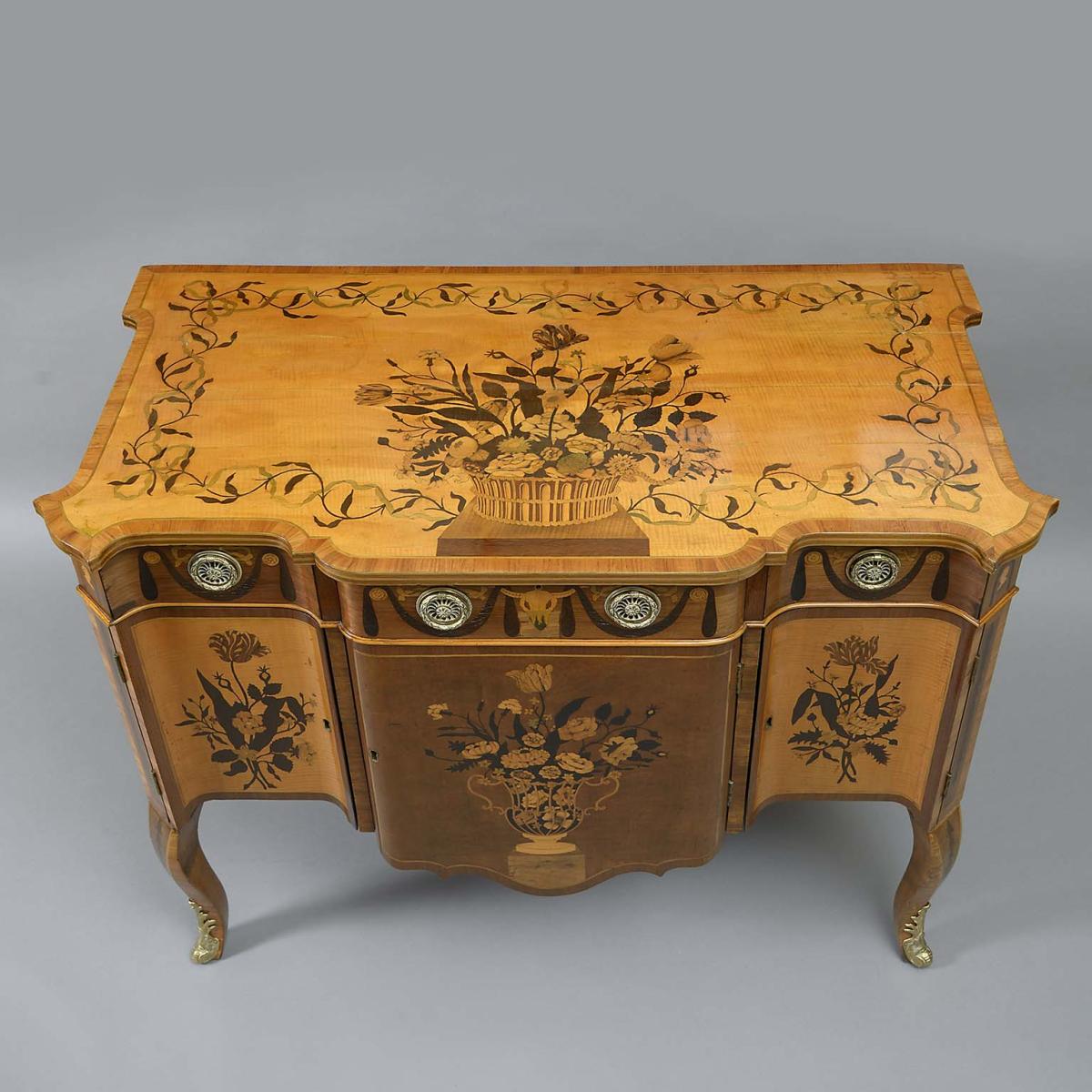
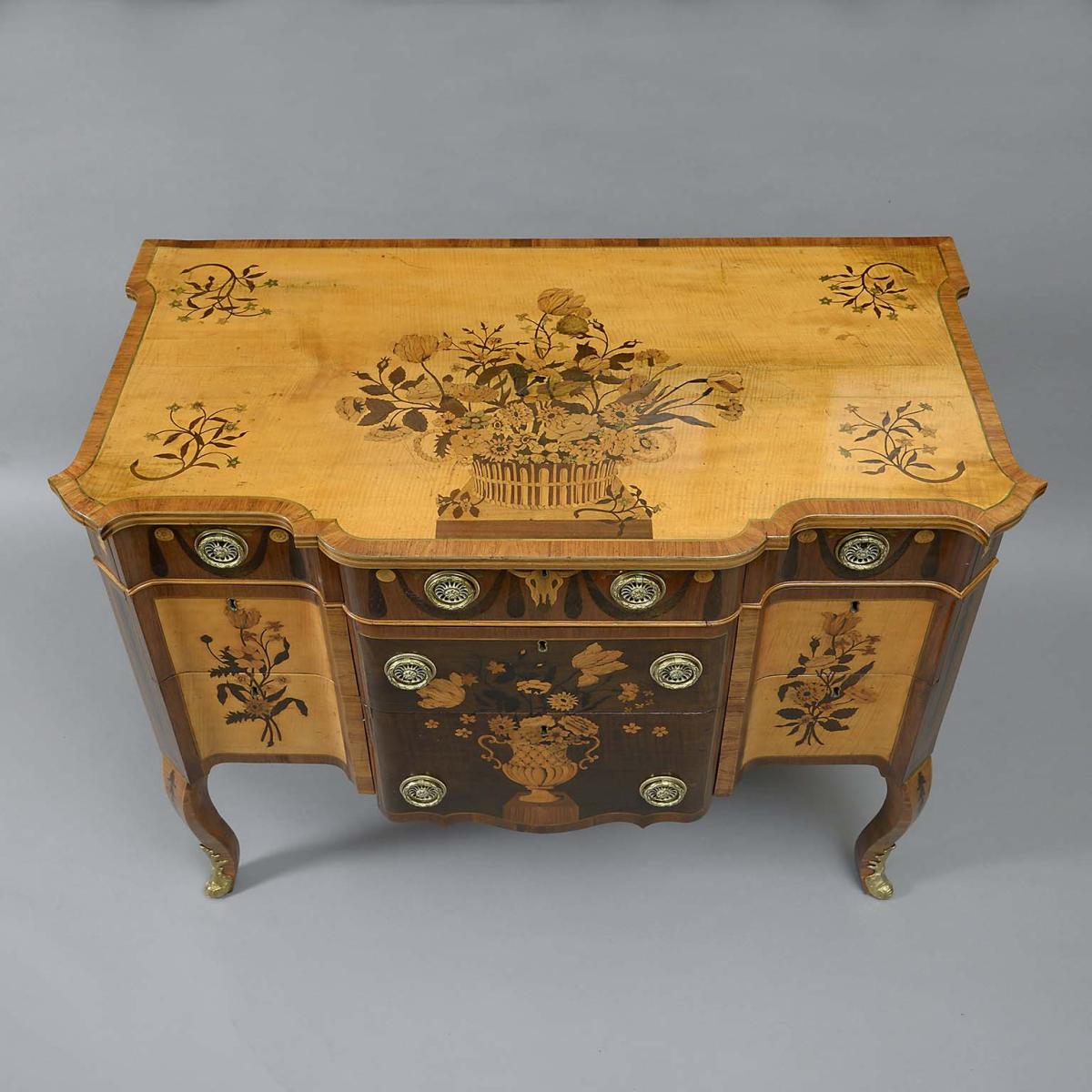
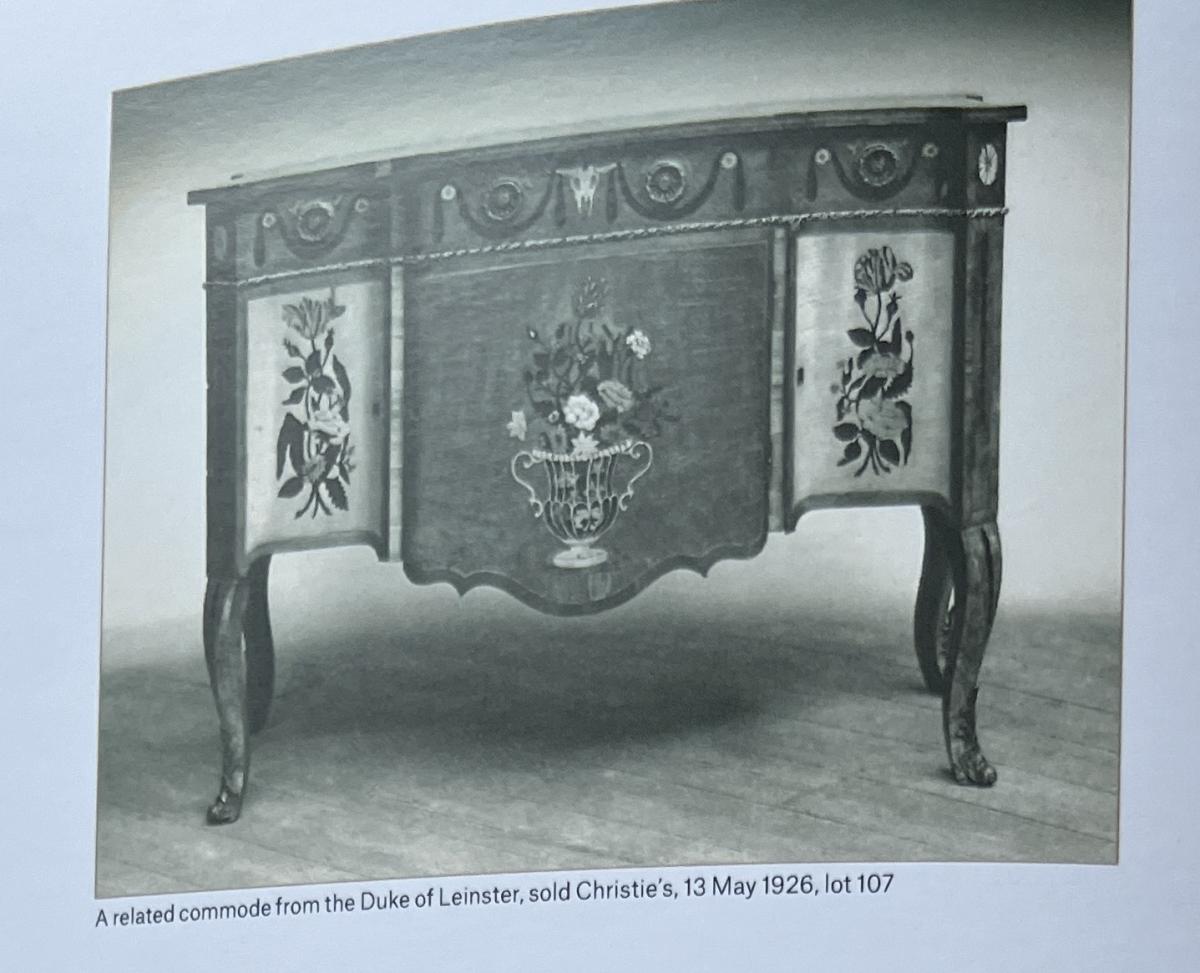
Price on application
This object is eligible for a Certificate of BADA Provenance
The BADA Standard
- Since 1918, BADA has been the leading association for the antiques and fine art trade
- Members are elected for their knowledge, integrity and quality of stock
- Our clients are protected by BADA’s code of conduct
- Our dealers’ membership is reviewed and renewed annually
- Bada.org is a non-profit site: clients deal directly with members and they pay no hidden fees
AN IMPORTANT MATCHED PAIR OF IRISH GEORGE III SYCAMORE, AMARANTH AND MARQUETRY COMMODES.
CIRCA 1780.
Of breakfront outline with shaped tops and canted angles, each top centred by a large basket of flowers with ribbon-tied leafy vines or flowering sprigs, crossbanded in tulipwood, the friezes inlaid with bucrania and draped laurel garlands each with three cedar-lined drawers, the canted angles with profile medallions, the fronts both centred by flower-filled vases and with further bouquets of flowers to the side panels, one commode with six drawers, the other with three doors, the central door enclosing two mahogany and cedar drawers, on shaped cabriole legs with foliate sabots.
One 34 ¼” (87 cm) high; 44” (112 cm) wide; 23 ½” (60 cm) deep.
The other: 34 ¼” (87 cm) high; 44 ¾” (114 cm) wide; 23 ¼” (59 cm) deep.
Provenance:
The commode with drawers from the collection of Sir Leicester Harmsworth.
The Hon. Mrs. B.H. Burns, sold Sotheby’s London, 5 April 1963, lot 186.
The matched pair, sold anonymously, Christie’s, London, 8 July 1971, lot 117.
Acquired for an important family collection on the advice of John and Helena Hayward.
By descent
The neoclassical commodes are designed in the French ‘Antique’ style, each of slight breakfront outline and with a central ‘tablet’ to the façade. They belong to a group of commodes of almost identical form, all with similar trompe l’oeil floral marquetry, metalwork and distinctive cabriole legs, and which collectively suggest an Irish origin. The form however is also associated with cabinet makers who settled in London via Paris in the late 1760s, the foremost being Christopher Fuhrlohg and Georg Haupt. Lucy Wood offers a detailed analysis of the commode by Christopher Fuhrlohg , circa 1772, in the Lady Lever Art Gallery, formerly the collection of Lord Leverhulme (d.1925) (L.Wood, Catalogue of Commodes, London 1994, no 9, pp.106-115 and colour of 11) and another in the Lady Lever Collection (op.cit.,no.13,pp 141-147 and colour pl. 19). She also identifies a sizeable group of commodes which all share the same distinctly French form and character, including a commode from Stanmer Park, Sussex, of circa 1773 (. p. 129, figs 124-125), another from Ham House (130, fig 126) and noting the ‘subsidiary group’ with Irish connections (. p. 130 note 12).
One of these ‘Irish’ commodes was sold from The Collection of the Duke of Leinster at Carton, Maynooth, Christie’s, London 13 May 1926 lot 107, another, with the trade label of the 19th century Dublin cabinet-maker, upholsterer and dealer ‘P.J. Walsh & Sons’ of 20, Bachelor’s Walk, Dublin, sold Christie’s, London, 21 May 1970, lot 113; another sold by an Irish family, Christie’s London, 11 November 1999, lot 160. The Irish connections conceivably suggest a Dublin source.
P.J. Walsh & Sons are recorded at 20 Bachelor’s Walk from 1870 until 1922 and in addition to the commode noted above, their label has been recorded on a number of items of both 18th and 19th century furniture. A mahogany side table of circa 1760 with typical Irish features is illustrated in The Knight of Glin & James Peill, Irish Furniture, New Haven and London, 2007, p.225, fig.82. One important client must have been Lord Iveagh since fifteen lots bearing Walsh’s label were included in the sale of the contents of Elveden Hall, Thetford, Christie’s house sale 21-24 May 1984. Walsh also supplied for Elveden an important medal cabinet, commissioned by James Caulfield, 1st Earl Charlemont and designed by Sir William Chambers. Walsh was possibly engaged to dismantle the library wing furniture of Charlemont House, Dublin for removal and reinstallation at the 3rd Earl’s Co. Tyrone seat, Roxborough (the coins having been sold in 1865 and Charlemont itself sold in 1870) and to sell those parts that were not to be retained.
BUCRANIA AND IRELAN
Bucranium was a popular device in Classical architecture. It was a symbol of pagan religious rites adapted to classical design and frequently used on metopes in the Doric order. In 1759 Sir William Chambers, architect, published his treatise on civil architecture. From then on this device featured on many of Ireland’s most prominent architectural masterpieces; Casino Marino, Dublin, Powerscourt, Dublin Castle Coole, Northern Ireland, Townley Hall and Castletown to name but a few.
CONCLUSION
The very fact that these commodes are part of a group that all appear to have Irish connections and bear the distinctive Bucrania devices, as does the Duke of Leinster's commode, proves almost conclusively that they were the creation of an Irish, probably Dublin, cabinetmaker.
Stock number
AOCB1The BADA Standard
- Since 1918, BADA has been the leading association for the antiques and fine art trade
- Members are elected for their knowledge, integrity and quality of stock
- Our clients are protected by BADA’s code of conduct
- Our dealers’ membership is reviewed and renewed annually
- Bada.org is a non-profit site: clients deal directly with members and they pay no hidden fees


